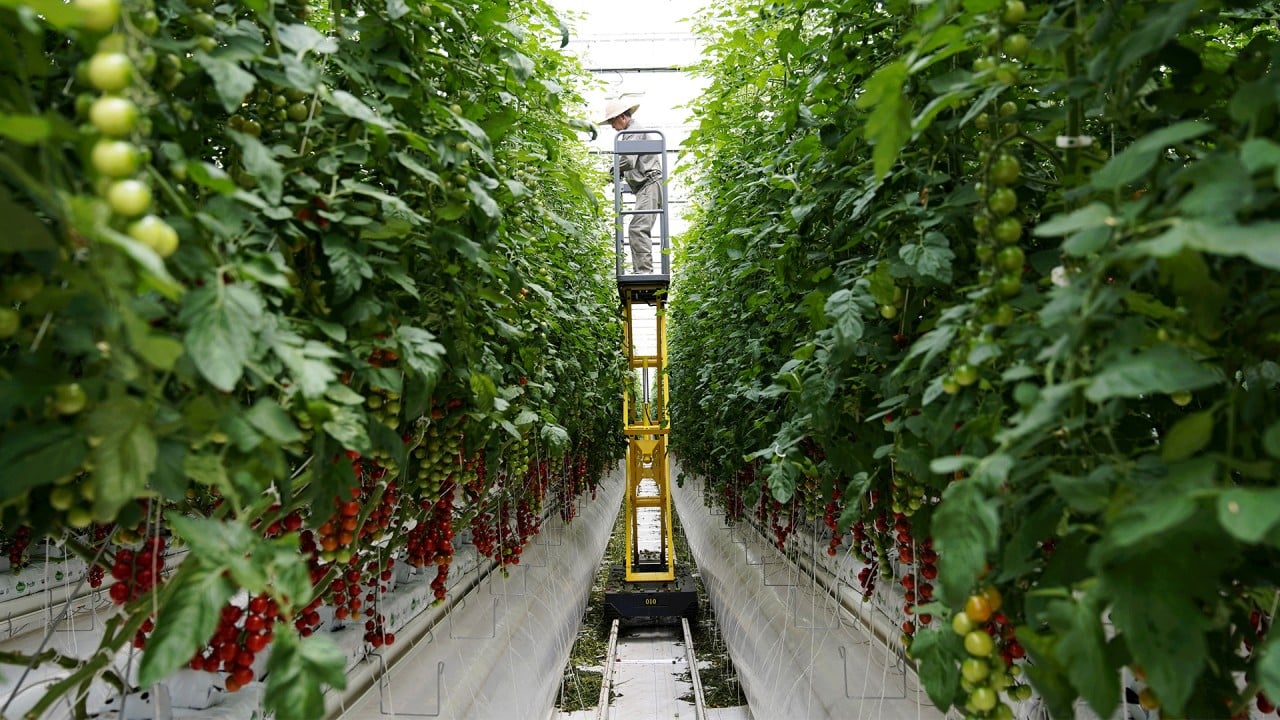
China food security: vow to boost 2022 soybean output sets stage for leap in GM seed tech
- China’s top leadership wants to improve seeds and per unit yield in its bid to secure domestic grain supply
- To boost self-sufficiency, China’s seed industry is facing a new round of reshuffling and industrial concentration
China’s efforts to lift domestic production of soybeans and other oil crops could accelerate the approval of genetically modified (GM) seeds and shake up the seed industry, analysts said.
At the weekend’s central rural work conference, China’s top leadership pledged to keep people’s rice bowls filled with domestic grain, setting a 2022 production target at least equivalent to this year’s 650 million metric tonnes.
“The general consideration next year is to stabilise domestic grain supplies and corn output, while expanding soybean and oil crop production,” agriculture minister Tang Renjian said in an interview with the official Economic Daily on Monday.
The Chinese government will extend corn-soybean strip intercropping, which utilises farmland most efficiently and can facilitate mechanisation. But the biggest growth potential will be from the improvement of seeds and per unit yield, he said.
“There are still relatively large gaps with developed countries in terms of per unit yield of corn, soybeans and other varieties.”
China is the world’s largest buyer of agricultural products from soybeans and corn, to rapeseed and palm oil. But the country’s vulnerability has been exposed amid trade tensions with major suppliers such as the United States and global farm commodity price hikes.
“The soybean trade, for instance, is closely related to political factors and diplomatic relations,” analyst Tian Yaxiong, from China Futures Co, said in a research note.
“Reducing [foreign] dependence can help regain initiative in trade negotiations.”
The agriculture ministry issued two draft documents in November detailing planned changes such as easing trial requirements for authorised GM crops, revising safety evaluations for genetically modified organisms used in agriculture, encouraging companies and institutions to build their own research bases, and relaxing geographic restrictions on test areas.
“There could be more policy support for the northeastern regions in China to grow oil crops,” Tian said.
Overall, the world’s second largest economy imports about 20 per cent of its edible oil requirements, with a particularly high dependence on foreign palm oil and soybeans.
The total estimated area planted with soybeans is growing, however. Some 9.35 million hectares were planted with soybeans in 2019, up from 6.8 million hectares in 2014, according to China Agricultural Information Net, an affiliate of the Ministry of Agriculture and Rural Affairs.
Domestic output of 18.1 million metric tonnes was still much lower than imports of 98.5 million metric tonnes in the same year.
The area used for soybeans is estimated to be 8.4 million hectares this year, while production is projected to be 16.4 million metric tonnes.
Guo Haiyan and Sun Yang, analysts from China International Capital Corp (CICC), said security in feed grains remains poor and there is a large gap between domestic output and demand for some crops.
The commercialisation of genetically modified seed production for corn and soybeans is now gradually unfolding
But China’s seed industry is facing a new round of reshuffling and industrial concentration.
“The commercialisation of genetically modified seed production for corn and soybeans is now gradually unfolding,” the CICC analysts said.
In addition to maintaining total arable land of 120 million hectares, the work conference vowed to turn 66.7 million hectares of it into high-grade farmland free from flooding and drought.
Beijing is also putting more pressure on local officials, linking grain production to their job performance appraisals from next year.
The government will use a minimum purchase price, subsidies and agricultural insurance to prevent losses among farmers, while trying to raise their incomes by providing additional services such as plant-upon-order, logistics and marketing.
“The job market for migrant workers may become more severe next year,” the agriculture minister said, citing the pandemic and macroeconomic situation.
About 183 million farmers left their hometowns to work at the end of September, an increase of 2 per cent from a year earlier, government data showed.
“We will take multiple measures to increase farmers’ income … and resolutely prevent a large-scale return of poverty.”



